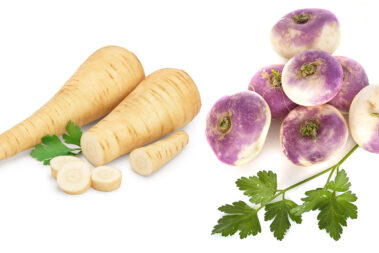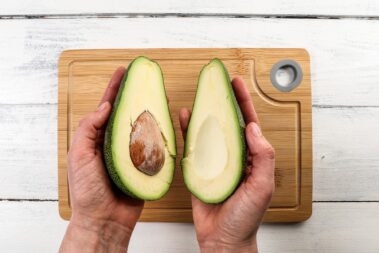Beans have found their way to the table in every corner of the globe.
If you’re interested in learning more about this world-renowned vegetable, then strap in. We’ve got 15 different varieties of beans. Many you’ve heard of, some you’ve eaten, but plenty you’ll likely be meeting for the first time.
Table of Contents
15 Different Varieties of Beans
Many of the beans listed below can be found at your local grocer, others are much more difficult to track down. If you are a fan of the musical fruit, then it is well worth hunting down some of these lesser-known legumes to give them a try yourself.
Adzuki Beans
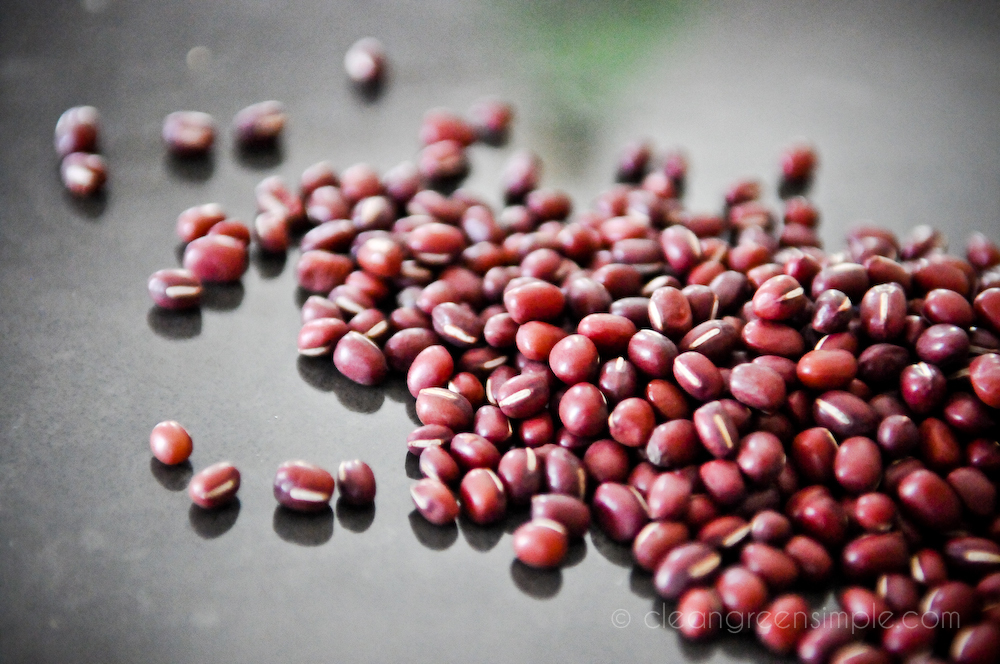
Also known as aduki or azuki, adzuki beans are popular in East Asia where they are most often cultivated. Adzuki varieties are all small in size and come in many colors, though red is the most common type.
These small beans are packed with protein, folate, and manganese. They have a uniquely sweet taste for a bean and are often used in desserts like sesame balls and superfood brownies. Their unusual flavor also works well in more traditional savory dishes like soups and curries.
Black Beans
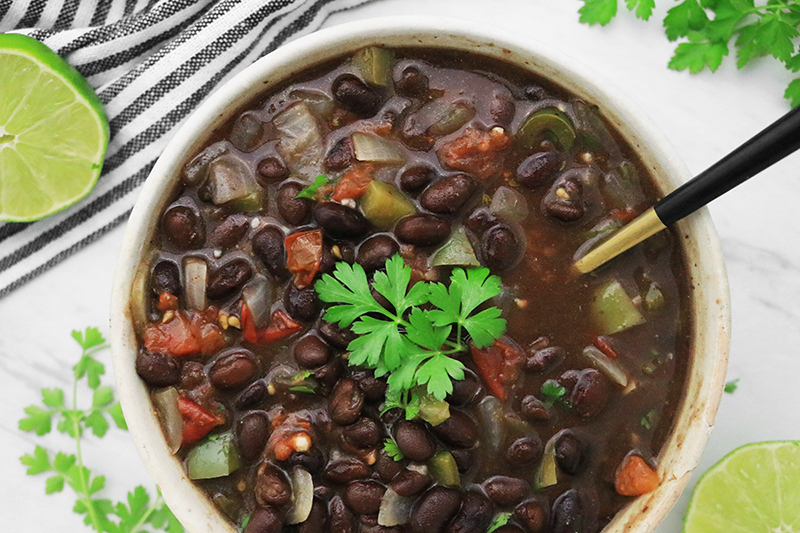
Also known as black turtle beans, black beans are one of the most common types found in Latin American cooking. This is a true bean in every sense of the word and is native to the Americas. It is small in size and all black except for a white dot on the hilum―or the part of the bean that’s attached to the seed pod.
Black beans are rich in folate, manganese, magnesium, and thiamine. They have a mild flavor and a creamy texture, making them perfect for a huge variety of dishes. In Latin cooking, they are often prepared with cumin, onions, and chili spices and used in burritos, enchiladas, and as a tasty, protein-packed side.
Related: How to Cook Canned Black Beans
Black-Eyed Peas
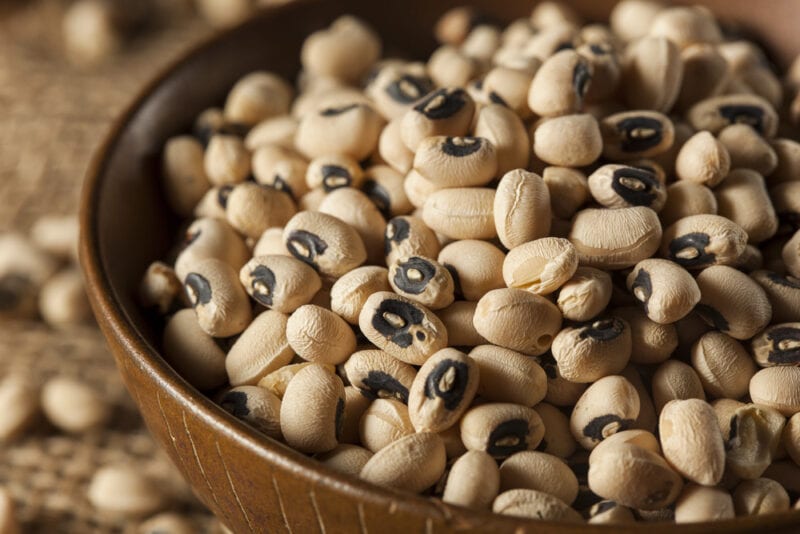
The black eyed-pea, also known as the cowpea, is a dainty legume native to Africa. The most common commercial variety, the California Blackeye, is predominantly white with a large black spot around the hilum. Heirloom varieties can be found with different colored spots from red to pink to green.
This lightweight legume packs a heavy hit of folate and copper and contains plenty of thiamine. Black-eyed peas have a noticeably earthy taste with some nutty undertones. They are dense but smooth and make a great addition to many soups and savory dishes. Salty ingredients and greens both help bring out the flavor of these little beans.
Cannellini Beans

Cannellini beans are the white variety of the more common red kidney bean. They are a true bean and are native to the Americas, but are popular throughout the world, especially in the Middle East. Like traditional kidney beans, they are kidney-shaped but have a uniform white color.
These pale beans are an excellent source of folate, fiber, and magnesium. They have a milder flavor than the red variety and lend themselves better to use in a variety of savory dishes, like our vegan white bean chili. Canned cannellini beans are often processed with excessive amounts of salt, so be sure to buy no-salt-added products or make these at home.
Calypso Beans
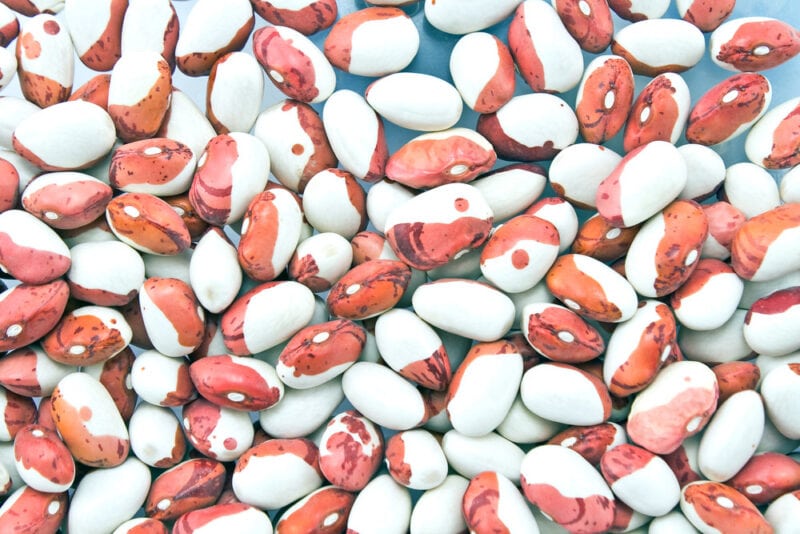
Calypso beans, also known as yin yang, orca, or dalmatian beans, are a kidney bean hybrid. They are one of the most striking beans you’ll find in the grocery store, with black or dark red ink-like splotches over a white background.
These striking beans are packed with iron and fiber. They have a flavor almost as unique as their look, something between starchy, earthy, and a touch muddy. It is a mild flavor, though, and works well in a variety of dishes. You can add an extra splash of pizazz to your meal by replacing pinto or cannellini beans with this Rorshack-looking legume.
Cranberry Beans
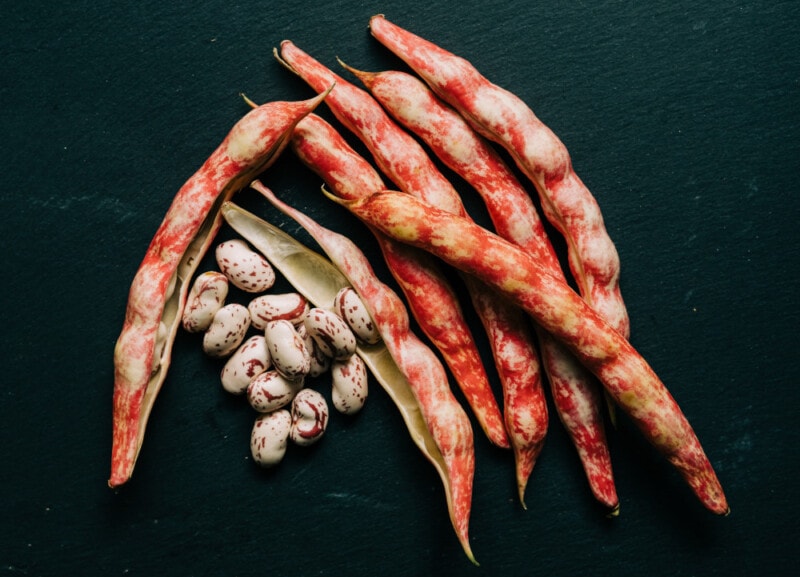
Cranberry beans, also known as borlotti, Roman, and soluggia beans, have a similar look to pinto beans. The two are both from the Phaseolus vulgaris, or common bean, species, but have different flavor profiles and uses. Cranberry beans come in a wider variety of colors as well, with red, magenta, or brown stripes over a tan or white background.
These pretty beans are packed with magnesium, iron, and thiamine. They have a nutty, slightly sweet, taste similar to a chestnut. They lack the earthy undertones common to pinto beans and are best used in casseroles, soups, and stews. These beans are popular in Italy and are often added to pasta dishes and used to create thick broth for sauces and soups.
Fava Beans
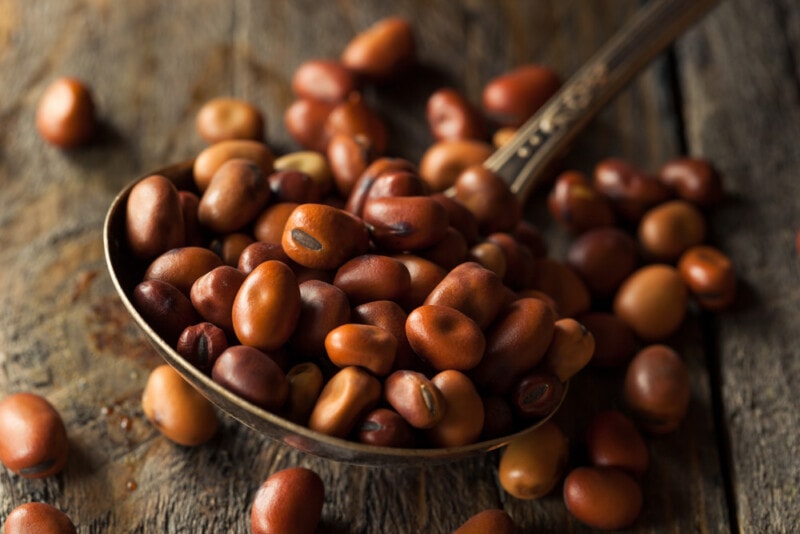
Fava beans, also known as faba or broad beans, are legumes but are only considered beans in the culinary sense. They are one of the oldest crops cultivated and used by man, but their origin species has yet to be found so no one can say exactly where they originated. They are wide, flat beans that vary between tan and brown when dried.
These funky beans have an impressive amount of protein and are very low in fat. They can be eaten raw or cooked except by people suffering from a rare genetic condition known as favism(1). For these unlucky people, most of whom are male, eating fava beans can trigger the destruction of red blood cells.
For everyone else, fava beans are a delicious addition to many meals. They have a full flavor that is nutty, umami, sweet, and just slightly bitter. These big beans are often smashed to a paste and used in falafel, hummus, and various thick dips.
Garbanzo Beans

Like fava beans, garbanzo beans are old-world legumes and have been a part of the human diet for millennia. They are commonly known as chickpeas and can also be marketed as gram and Egyptian peas. They have a unique shriveled oval shape and are pale tan in color.
Garbanzo beans are low in calories and contain a long list of nutrients. They are popular in Middle East cuisine but are used around the world. In addition to falafel and hummus, these little peas make excellent additions to salads and grain dishes. Their mild flavor, which is starchy, slightly nutty, and just a touch sulfury, makes them a perfect candidate for vegan chicken salad sandwiches.
Green Beans

The term green bean is used to describe the unripe fruit of various kinds of common beans, including kidney, pinto, and white beans. While in their immature form, stuck inside the pod, there is very little visual difference between these varieties.
The nutrition content and look of green beans are also similar across the many types. These young beans are full of vitamins C and A and contain many essential minerals. When cooked plain, green beans have a fresh, slightly grassy flavor. They should not be eaten raw due to the presence of lectins, which can upset the stomach.
Kidney Beans

Red kidney beans are another common bean native to the Americas. They are named for their blood-red coloring and kidney shape. They come in a variety of shades from pale red to deep crimson. Cannellini beans are the white variety of this type of bean.
Kidney beans are high in iron, folate, and fiber. They have a dense texture and a bold nutty flavor with a slightly sour or metallic undertone. They require a long time to cook and make a great addition to slow cooker meals. You will find kidney dishes in a variety of Creole meals, chili, casseroles, and salads.
Lentils

Lentils are small legumes native to the fertile crescent. They have been cultivated by humans for millennia and have been bred into multiple varieties. The most common types are green and red, but they also come in various shades of yellow, brown, and orange.
Pound for pound, lentils pack more protein and folate than any other type of bean. Different types of lentils have different flavors. Some are earthy or spicy and some slightly sweet. Lentils are a staple in Indian cuisine and also make great additions to grain dishes, soups, and stews.
Lima Beans
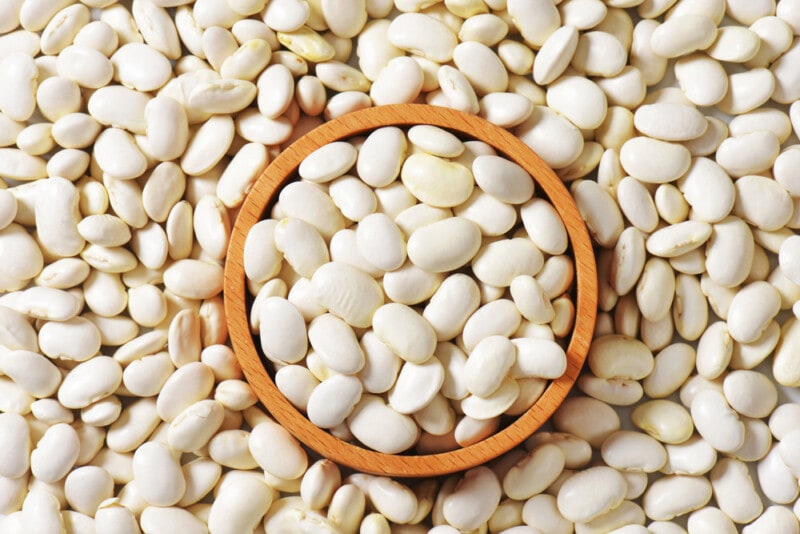
Lima beans, also known as butter, seiva, and wax beans, are a different species of Phaseolus than the common bean. They are large, flat, white or green -colored beans that were first cultivated by tribes in the Andes as far back as 2000 BC.
Lima beans are a higher-starch bean with plenty of protein, folate, and potassium. They have a smooth, buttery texture and a mildly sweet and nutty taste. Lima beans are popular in South American, Indian, and American cuisine and are often found in soups and succotash.
Mung Beans

The mung bean, also known as green gram, is a legume native to India. They are small, round beans with a distinct olive green coloring and are most popular in Asia, India, and the Middle East.
Like lentils, mung beans are extraordinarily high in folate and protein. They have a slightly sweet taste and are a popular ingredient in frozen Chinese desserts. When cooked, they make a flavorful replacement for chickpeas and other beans in many dishes. They can also be eaten raw or sprouted and added to pad thai,salads, and more.
Pinto Beans

The pinto bean is another variety of the common bean native to the Americas. It is one of the most popular types of beans eaten in Mexico and the southern US. These medium-sized beans have a distinct tan coloring with speckles and stripes of brown or red.
Like other common beans, these contain plenty of folate, manganese, and phosphorus. They have a bold flavor that ranges between earthy, nutty, and muddy. Their smooth, rich texture lends itself well to mashing and refrying. They are a popular bean for use in burritos, tostadas, and other common Mexican and Tex-Mex dishes.
White Beans

The term white bean refers to many closely related varieties, including navy, great northern, haricot, white pea, and Boston beans. All are true beans that have been bred from the same plant that originated in America. They come in a range of sizes, all with an elongated shape and full white coloring.
White beans are loaded with b vitamins, fiber, and a variety of unique organic compounds thought to fight cancer and lower cholesterol. They have a smooth texture and mild, nutty flavor. White beans are most popular in baked bean dishes but also make a great addition to soups and stews.
What Technically Qualifies as a Bean?
Broadly speaking, a bean is a seed harvested from any species of Leguminosae. This group of plants, also called Fabaceae, includes a huge variety of flowering trees, shrubs, and herbaceous plants.
This wide definition uses the word bean as interchangeable with the word legume. Depending on who you ask, the definition of bean can far more complicated than that.
In the culinary world, bean is often used to differentiate certain types of legumes from others. Peas and smaller pulses are typically not considered beans in the kitchen.
In terms of global trade, beans are defined as the hard seeds harvested from plants in the genus Phaseolus. These vines are all native to the Americas and include well-known beans such as lima, black, and kidney. But this classification excludes many foods considered beans in a culinary sense, such as mung, chickpea, and fava.
For our list, we looked at any legume with culinary applications, nutritional content, and a look that most people would agree makes them a bean
FAQ
How many types of beans are there?
There are over 400 types of true beans in the world. If you count legumes outside the Phaseolus genius, then there are even more—thousands, in fact. Fava beans and lentils have been cultivated by our ancestors for millennia and true beans have been enjoyed in the Americas almost as long as humans have lived on the continent.
What is the healthiest bean to eat?
Pretty much every bean out there is a healthy option due to their high protein and fiber content, and all the other nutrients common to this food group. Generally speaking, though, chickpeas, lentils, and peas are often considered some of the healthiest legume options.
Which bean is best for gut health?
All beans are packed with fiber, which supports gut health. Small white navy beans, in particular, are full of gut-supporting fiber. They also have plenty of amino acids and other nutrients that support the gut, making them an extra good option for those looking to aid their digestion.
Cooking With Beans
Now that you know how many different types of beans are out there just waiting to be enjoyed, it’s time to get cooking! Here are some of our favorite bean-a-licious recipes.
- Zesty Quinoa with Black Bean & Tomato – These healthy black bean and quinoa bowls come together super quick for a healthy lunch or weeknight dinner.
- Vegan Green Bean Casserole – Non-dairy milk and vegan butter make this plant-based casserole taste just like the real thing.
- Vegan Black Bean Burgers with Oats – Packed with veggies, black beans, and spices, these bean burgers put store-bought options to shame.
- Chickpea Salad Sandwich – My go-to lunch for something filling, healthy, and delicious.
- Slow Cooker Vegan Chili – This chili features three different types of beans, but I say why stop there? Add and customize based on whatever you have on hand.
Want to learn more about common vegan ingredients and get access to more delicious recipes? Sign up for our newsletter!
Beans, Beans, Beans
With such a variety of textures, flavors, and appearances, beans have become a permanent fixture at the table, no matter where that table is located. If your bean exploration has been limited to only the most popular types, it’s time to branch out. The 15 varieties listed above are a great place to start!
What is your favorite kind of bean? Let us know in the comments section below.
- How to Pick the Perfect Watermelon For a Sweet Summer Treat - April 10, 2024
- Future Kind’s Foundations: A Multivitamin Made for Vegans - December 5, 2023
- Does Nutritional Yeast Go Bad? - November 28, 2023


